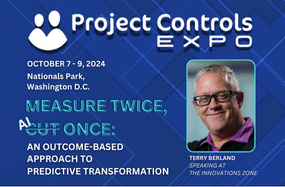The Road to Risk Reduction with Primavera Risk Analysis
What should you do – accept, mitigate, reduce or eliminate them? No, we’re not talking about those extra pounds that arrive uninvited at too many of our waistlines. We’re talking about risk in projects and the best way to plan for events that may or may not happen. Primavera Risk Analysis brings users the capability to model risks and understand the budget impacts (cost and time) of different options for handling them. But what is risk and how can we realistically deal with the inevitable complexity? Some quick information on some of the fundamentals involved may help.
Risk or Uncertainty?
The two words are often used interchangeably, but their meanings are in fact different. Uncertainty refers to anything that you cannot be sure about – and whose probability of happening cannot be measured. Changes in the weather and the economy are instances that are often cited. Even if general or seasonal trends may be apparent, these areas are determined by so many different factors that it is impossible in many cases to predict what will happen. Risk on the other hand refers to events you can reasonably model and to which you can attach meaningful measures of probability.
Monte Carlo Models
As soon as a risk depends on more than just a handful of factors, it becomes too complex (in many cases) to try to work out what will happen by pure mathematics alone. So instead of trying, risk modeling turns to Monte Carlo techniques (named after the casino in Monte Carlo), in which randomly generated inputs are fed into a model to yield a series of results. This has two big advantages. The first is that computer processors can use this technique to rapidly produce realistic predictions of the likelihood of a risk materializing. Secondly, these results often lend themselves well to being plotted on a graph for intuitive and immediate understanding by project managers and stakeholders. Primavera Risk Analysis offers a range of visual interpretations for this.
Risk Registers Integrated with Project Schedules
Understanding the nature of risks and having a practical way of assessing their chance of happening is good. So is making a risk register or a record of all relevant risks to see how collectively they might affect a project. Oracle Primavera Risk Analysis offers risk register functionality as well so that you can define new risks or use registers you’ve already defined. It integrates the risk register with information about response or contingency plans to show you cost-effectiveness. It also generates a new ‘risk adjusted schedule’ for your project.
Why So Negative? The Positive Side of Risk
There’s more to risk than just the negative events that can delay delivery or increase costs. Risk in its most general sense includes positive risk as well, meaning opportunities as well as threats. Whether it’s a matter of leveraging the availability of additional resources to enhance project functionality or analyzing the possibility of increasing manufacturing runs to sell more products, potential upside deserves to be factored in just like possible downside. With Primavera Risk Analysis, you can see not only how best to bring your projects in before time and under budget, but how to maximize any chances of boosting return on investment as well. All of which might just also allow you some extra time at the gym for some personal upside, should you be so inclined…
LoadSpring lets you identify the risks associated with managing your project portfolio via its cloud services. Call us about our Primavera Risk Analysis knowledge to learn how you can eliminate potential problems and ensure success for your project. +1 978.685.9715








